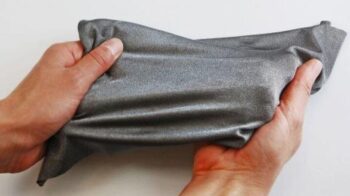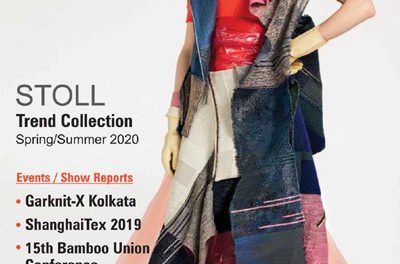 The global Solution Dry Spinning Spandex Fabric market size was valued at $ 5690 mn in 2022 and is forecast to a readjusted size of $9122.8 mn by 2029 with a CAGR of 7.0% during review period.
The global Solution Dry Spinning Spandex Fabric market size was valued at $ 5690 mn in 2022 and is forecast to a readjusted size of $9122.8 mn by 2029 with a CAGR of 7.0% during review period.
Market Overview:
The Solution Dry Spinning Spandex Fabric Market has witnessed remarkable growth in recent years, fueled by the textile industry’s increasing demand for high-performance, stretchable fabrics. Solution dry spinning is a cost-effective and environmentally friendly method for producing spandex fibers, offering superior elasticity, durability, and comfort compared to traditional materials. Spandex fabrics find extensive usage in sportswear, activewear, lingerie, swimwear, and medical textiles, among other applications.
Market Key players in the Solution Dry Spinning Spandex Fabric Market include:
• Hyosung Corporation
• Zhejiang Huafon Spandex Co. Ltd.
• Shandong Ruyi Technology Group Co. Ltd.
• Xinxiang Bailu Chemical Fibre Group Co. Ltd.
• Yantai Tayho Advanced Materials Co. Ltd.
• ZheJiang Huahai Machinery Group
• Highsun Group
• Taekwang Industrial Co. Ltd.
• Asahi Kasei Corporation
• Jiangsu Shuangliang Spandex Co., Ltd.
• BangLian
• TK Chemical Corporation
• EBH SPANDEX CO.,LTD
• Xiamen Lilong Spandex Co., Ltd.
Regional Markets:
US Market:
The United States represents a significant market for Solution Dry Spinning Spandex Fabric, driven by the country’s robust textile industry, consumer preferences for comfort-driven clothing, and the growing popularity of athleisure and performance apparel. The presence of leading textile manufacturers, technological advancements, and changing fashion trends further contribute to market growth in the US.
EUROPE Market:
Europe holds a prominent share in the Solution Dry Spinning Spandex Fabric Market, with countries like Germany, Italy, and France leading the region’s textile and apparel industries. The region’s focus on sustainability, innovation, and functional textiles drives the adoption of spandex fabrics in sportswear, fashion, and technical textiles.
APAC Market:
The Asia-Pacific region is witnessing rapid growth in the Solution Dry Spinning Spandex Fabric Market, fueled by rising disposable incomes, urbanization, and lifestyle changes. Countries like China, India, and South Korea are major producers and consumers of spandex fabrics, supported by a strong textile manufacturing ecosystem and growing demand for high-quality apparel and sportswear.
 Market Segmentation by Regions:
Market Segmentation by Regions:
• North America (United States, Canada and Mexico)
• Europe (Germany, France, United Kingdom, Russia, Italy, and Rest of Europe)
• Asia-Pacific (China, Japan, Korea, India, Southeast Asia, and Australia)
• South America (Brazil, Argentina, Colombia, and Rest of South America)
• Middle East & Africa (Saudi Arabia, UAE, Egypt, South Africa, and Rest of Middle East & Africa)
Market Strengths:
Superior elasticity and stretch recovery properties of spandex fabrics, ensuring comfort and performance.
Versatile applications across apparel, sportswear, lingerie, medical textiles, and other industries. Cost-effective and environmentally friendly solution dry spinning process, reducing production costs and carbon footprint. Growing consumer demand for athleisure, activewear, and performance-driven clothing, driving market growth.
Market Weaknesses:
Dependency on petrochemical-based raw materials, susceptible to price fluctuations and supply chain disruptions. Limited availability of specialized spandex fibers and technical challenges in processing and manufacturing. Concerns regarding spandex fabric durability, colorfastness, and environmental impact, affecting consumer perceptions and brand reputation.
Market Opportunities:
Expansion of product portfolios to cater to emerging applications such as smart textiles, wearable technology, and functional apparel. Collaboration with fashion designers, brands, and retailers to develop innovative spandex-based products and collections. Penetration into niche markets such as medical textiles, maternity wear, and adaptive clothing for people with disabilities. Adoption of sustainable production practices, including recycled and bio-based spandex fibers, to meet consumer demand for eco-friendly textiles.
Market Threats:
Intense competition from alternative stretch fabrics, including elastane, nylon, and polyester blends, impacting market share and pricing dynamics. Regulatory challenges related to chemical safety, labeling requirements, and environmental compliance affecting product development and marketing. Economic downturns, trade disputes, and geopolitical tensions impacting global trade and consumer spending on apparel and textiles. Counterfeit products, quality issues, and supply chain disruptions undermining consumer trust and brand integrity.
Market Past Performance:
The Solution Dry Spinning Spandex Fabric Market has demonstrated robust growth over the past decade, driven by increasing demand from textile manufacturers, changing consumer preferences, and technological advancements in fiber production and processing. Market players have invested in research and development, production capacity expansion, and marketing initiatives to capitalize on emerging trends and maintain competitiveness.
Market Forecast:
The global Solution Dry Spinning Spandex Fabric Market is poised for continued growth, with steady demand expected from apparel, sportswear, and technical textiles sectors. Factors such as population growth, urbanization, lifestyle changes, and technological innovations will drive market expansion. Strategic initiatives focusing on product innovation, market diversification, and sustainability will be essential for market players to sustain growth momentum and maintain a leading edge in this dynamic and competitive market.
Market Research and Development:
Research and development play a crucial role in driving innovation and shaping the future of the Solution Dry Spinning Spandex Fabric Market. Key focus areas include fiber performance optimization, process efficiency, sustainability, and recyclability. Collaboration with industry stakeholders, academic institutions, and research organizations facilitates knowledge exchange, technology transfer, and the development of next-generation spandex fibers and textiles.
Source: Quants and Trends





















